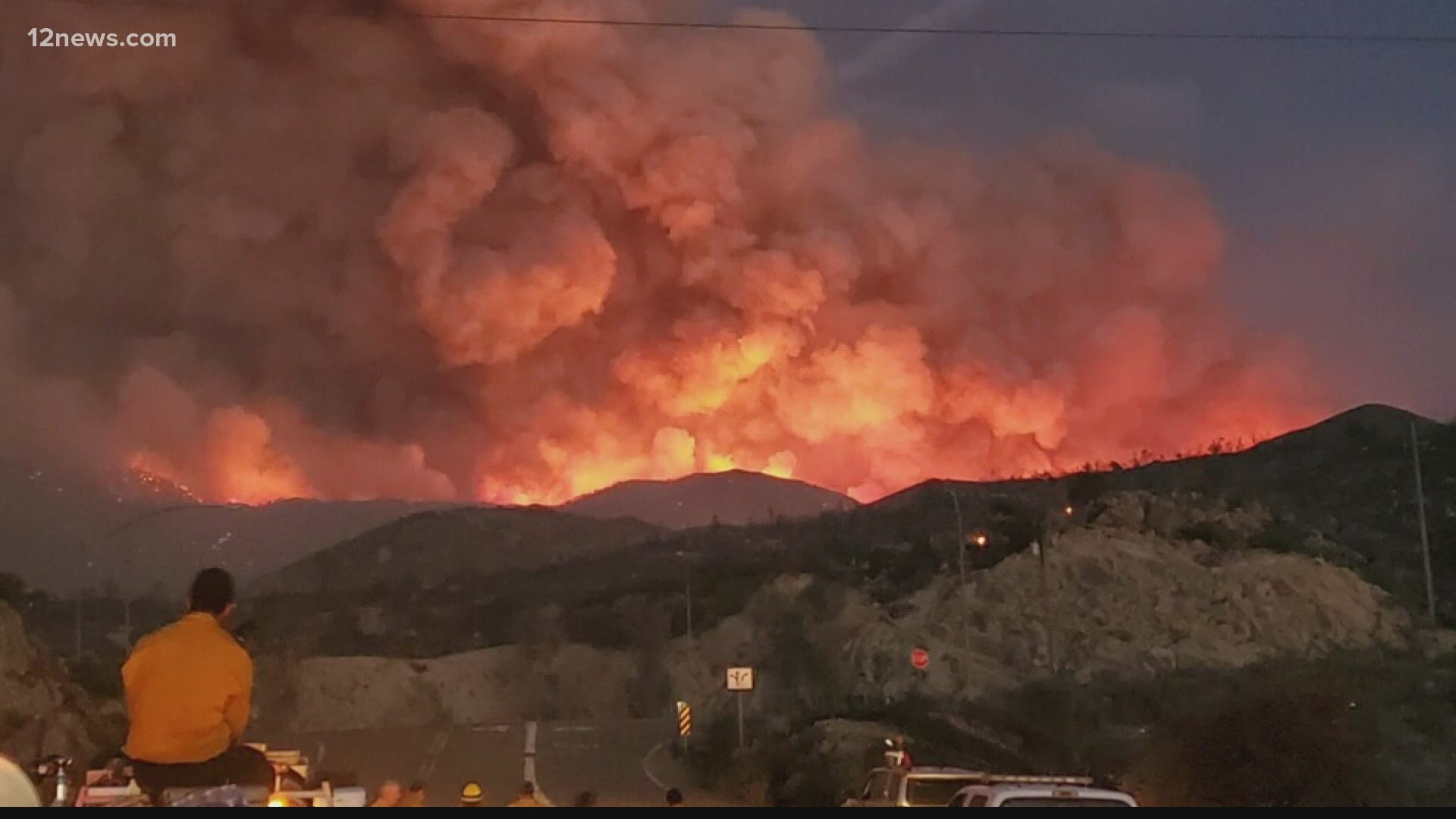SUPERIOR, Ariz. — In the wake of the devastating Telegraph wildfire east of the Valley, questions have been raised about the potential role of military aircraft in sparking the fire.
Here's what we know:
WIldfire's impact on area
The wildfire has charred almost 200,000 acres of pristine wilderness and forced hundreds of people to evacuate. It is now 91 percent contained.
The U.S. Forest Service has labeled the fire as "human-caused" and continues to investigate.
“They have a pretty good idea of where the point of origin is,” one of the fire commanders told the Town of Superior Council on June 10.
Forest Service investigators could not be reached for comment.
Why focus on military aircraft?
When people in the Superior area saw smoke early on the afternoon of June 4 in a remote wilderness to the south, there were suggestions on social media that military jets were to blame.
Military aircraft are a common sight in Eastern Arizona. The airspace high above the rugged landscape is a vast training ground for pilots.
Pilots practice mock dog fights and other maneuvers in designated airspace.
"Arizona Trail hikers will comment on how low you see them dip into canyons," said Town of Superior Mayor Mila Besich, whose family has lived in the area for several generations.
Superior, population 3,000, borders the Outlaw/Jackal Military Operations Area.
How could a fighter jet start a fire?
Fighter jets fire off flares in mock dogfights in order to confuse a pursuer's heat-seeking missiles.
The flares burn hotter than a jet engine. In rare circumstances, a flare has ignited a wildfire.
Mayor: 'High probability caused by jets'
In an interview with 12 News, Besich said she and others were told at a meeting with fire commanders on the evening of June 6 that the probable cause of the wildfire was the fighter jets that streak through the skies in eastern Arizona.
"When they did an incident command switchover, they said that there was a high probability that it was caused by some military fighter jets in the area that day," Besich said.
"The area where the fire started is extremely remote, It's not an area that's high-trafficked or an area that there's a lot of camping... You're not going to go out there when it's reaching 100 degrees."
RELATED: 'Resources are stretched thin': Battling the Backbone Fire is still a priority for fire crews
F-16 commander confirms jets in area
Fighter jets were on maneuvers in the Telegraph fire area on June 4.
In a statement to 12 News, the commander of the Tucson-based Air National Guard's 162nd Wing confirmed that his F-16 Fighting Falcons were training near the wildfire's ignition site.
He also confirmed flares were used in-flight maneuvers.
The U.S. Air Force reviewed radar tapes and concluded the lowest altitude for the aircraft was 11,700 feet, according to Brig. Gen. Jeffrey L. Butler.
Butler said the flares would have burned out before they hit the ground.
"Any flares expended during these maneuvers would have been released in accordance with regulations and would have burned out 3,000 feet above ground level," Butler said.
Here is Gen. Butler's full statement:
"First and foremost, our thoughts are with those who are affected by the wildfires across Arizona.
"As citizen-airmen we are Arizona residents. The Arizona National Guard flies in our own backyards where we've camped, hunted and hiked with our families for decades. We love this state.
"As such, we take particular care in protecting our environment here in Arizona. The Air National Guard continues to monitor the wildfire situation in the East Valley very closely.
"While the Telegraph Fire is still under investigation by federal authorities, we can confirm F-16 Fighting Falcons from the 162nd Wing in Tucson were conducting training on June 4th near the Telegraph fire coordinates during the report of fire ignition.
"According to a recent U.S. Air Force inquiry and review of radar tapes in the area, the lowest altitude observed was 11,700 feet. Any flares expended during these maneuvers would have been released in accordance with regulations and would have burned out 3,000 feet above ground level.
"Our pilots and airmen are very disciplined and exercise extreme caution, carefully following safety measures to protect the communities where we live and serve."
Luke AFB says jets weren't in area
Luke Air Force Base officials also investigated whether their jets were in the vicinity of the Telegraph ignition site.
A spokeswoman told 12 News the base's F-16 fighter jets did not fly in the military operations area on June 4.
Maj. Candice Dillitte, chief of public affairs at the West Valley base, provided this statement:
"Our thoughts are with all the residents affected by the fire.
"Although the 56th Fighter Wing does not control the Outlaw/Jackal MOA, wing leadership conducted an inquiry into the activity of our flights after learning of concerns that military aircraft may have contributed to these fires.
"Through analysis of flight data for the 56th Operations Group, we have concluded that no aircraft from Luke AFB was operating in the airspace over Telegraph at the time nor immediately preceding the reports of fire ignition."
Arizona Wildfires
Keep track of the latest updates of wildfires across the Grand Canyon State on YouTube.

